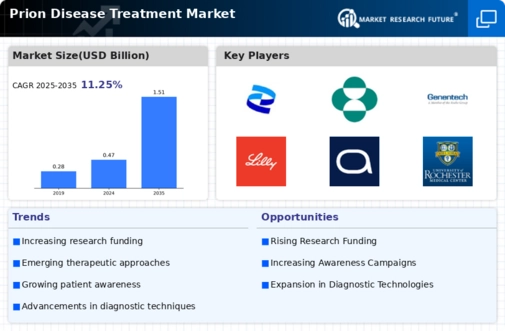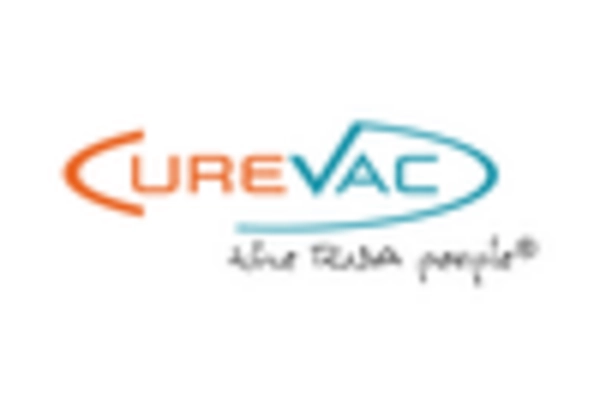Increased Awareness and Education
Increased awareness and education regarding prion diseases are pivotal in shaping the Prion Disease Treatment Market. As healthcare professionals and the general public become more informed about the symptoms and implications of prion diseases, there is a corresponding rise in demand for effective treatments. Educational campaigns and initiatives by health organizations are instrumental in disseminating information, which may lead to earlier diagnosis and intervention. This heightened awareness is likely to stimulate interest from pharmaceutical companies to develop targeted therapies, thereby contributing to the growth of the Prion Disease Treatment Market. As more stakeholders recognize the importance of addressing prion diseases, the market is expected to expand.
Rising Incidence of Prion Diseases
The increasing incidence of prion diseases, such as Creutzfeldt-Jakob disease, is a notable driver for the Prion Disease Treatment Market. Reports indicate that the prevalence of these diseases is on the rise, with estimates suggesting that approximately 1-2 cases per million people occur annually. This growing incidence necessitates the development of effective treatment options, thereby propelling market growth. As healthcare systems grapple with the challenges posed by these rare but fatal diseases, the demand for innovative therapies and diagnostic tools is likely to escalate. Consequently, pharmaceutical companies are investing in research and development to address this urgent need, which could lead to a more robust Prion Disease Treatment Market in the coming years.
Advancements in Diagnostic Techniques
Advancements in diagnostic techniques are significantly influencing the Prion Disease Treatment Market. Enhanced methods, such as real-time quaking-induced conversion (RT-QuIC) and other biomarker-based approaches, have improved the accuracy and speed of prion disease diagnosis. These innovations facilitate earlier detection, which is crucial for effective treatment and management of prion diseases. As diagnostic capabilities expand, healthcare providers are better equipped to identify affected individuals, leading to increased awareness and demand for treatment options. This trend is expected to drive investments in the Prion Disease Treatment Market, as stakeholders seek to develop targeted therapies that align with the evolving landscape of prion disease diagnostics.
Regulatory Support for Innovative Therapies
Regulatory support for innovative therapies is emerging as a significant driver for the Prion Disease Treatment Market. Regulatory agencies are increasingly recognizing the need for expedited pathways for the approval of treatments targeting rare diseases, including prion diseases. This supportive environment encourages pharmaceutical companies to invest in the development of novel therapies, as the likelihood of successful market entry increases. Additionally, initiatives aimed at fostering collaboration between regulators and industry stakeholders are likely to enhance the efficiency of the drug development process. As a result, the Prion Disease Treatment Market may witness a surge in new treatment options, ultimately benefiting patients suffering from these debilitating conditions.
Growing Investment in Research and Development
The growing investment in research and development is a critical driver for the Prion Disease Treatment Market. Governments and private entities are increasingly allocating funds to explore novel therapeutic strategies and potential drug candidates. For instance, funding for prion research has seen a marked increase, with several initiatives aimed at understanding the underlying mechanisms of prion diseases. This influx of capital is likely to accelerate the discovery of effective treatments, thereby expanding the market. Furthermore, collaborations between academic institutions and pharmaceutical companies are fostering innovation, which may lead to breakthroughs in the Prion Disease Treatment Market, ultimately benefiting patients and healthcare providers alike.

















Leave a Comment